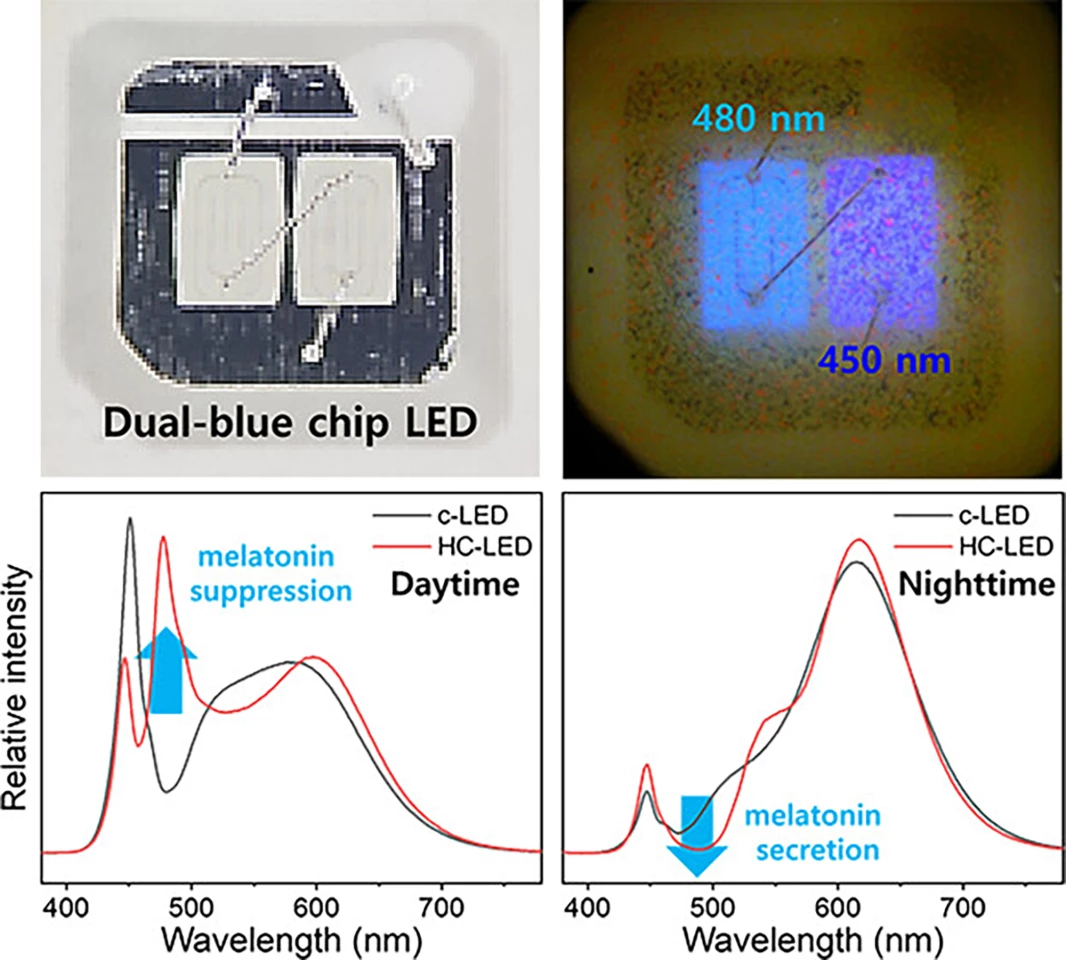Researchers have designed and tested ‘human-centric’ LEDs that emit different wavelengths of blue light depending on whether it’s daytime or nighttime, reducing the disruptive effect artificial light has on our biological clock. They hope manufacturers will apply their findings to produce these novel LEDs.
Because our biological clock – circadian rhythm – is synchronized with the natural light-dark cycle, it’s important that we use or are properly exposed to light. But, in our modern society, so many of us are exposed to an abundance of indoor, artificial light that can throw our circadian rhythm out of whack, leading to disrupted sleep.
More so than any other color, blue light messes with the body’s ability to prepare for sleep because it tricks our brains into thinking it’s daytime, suppressing the production of our ‘winding-down’ hormone, melatonin. Intrinsically photosensitive retinal ganglion cells (ipRGCs) in the eye’s retina are particularly sensitive to the absorption of blue light with a wavelength of 480 nm, with previous studies suggesting that wavelengths of 460 nm to 500 nm regulate our circadian rhythm.
To address the bodily rhythm disruptions caused by blue light, researchers developed a so-called ‘human-centric’ LED designed to provide the right type of blue light at the right time of day.
Aware that two different wavelengths of light influence circadian rhythm, the researchers created two LEDs: one that emits a ‘daytime’ wavelength of 480 nm and one that emits an ‘evening’ wavelength of 450 nm. These two LEDs were then built into bulbs. Phosphors were encased in the bulbs to convert some of the blue light into red and green like conventional bulbs do.
The human-centric LED (HC-LED) bulbs were placed along with conventional LED (c-LED) bulbs in fixtures installed in the ceiling of a windowless room furnished with a desk, treadmill and bed. Twenty-two healthy adult male volunteers were recruited for the study and randomly assigned to HC-LED or c-LED lighting (480 nm). All participants were exposed to both types of lighting, as well as daylight/nighttime lighting, and stayed in the room for three days. Electronic devices like smartphones and computers were allowed but had a blue-light filter applied.

Melatonin levels were measured through saliva samples taken at 15 time points (and lighting conditions) over 50 hours, including between midnight and 3:00 a.m. Despite this interruption to sleep to obtain samples, participants showed a well-developed circadian rhythm. The researchers found that exposure to HC-LEDs increased the participants’ nighttime melatonin levels by 12.2% and reduced daytime melatonin by 21.9% compared to c-LED exposure.
The researchers hope manufacturers of LED lamps and electronic displays can apply their findings to produce HC-LEDs. Most displays, including smartphones, televisions, and computer monitors, support a mode for blocking blue light at night (BLAN), but there is no mode that can quickly suppress melatonin by enhancing blue light during the daytime.
“The HC-LED, which is expected to improve the circadian rhythm by controlling the wavelength band of light directly related to melatonin, will be a useful item for maintaining a healthy circadian rhythm in modern life, where people spend more time indoors,” said the researchers.
The study was published in the journal ACS Omega.
Source: American Chemical Society






